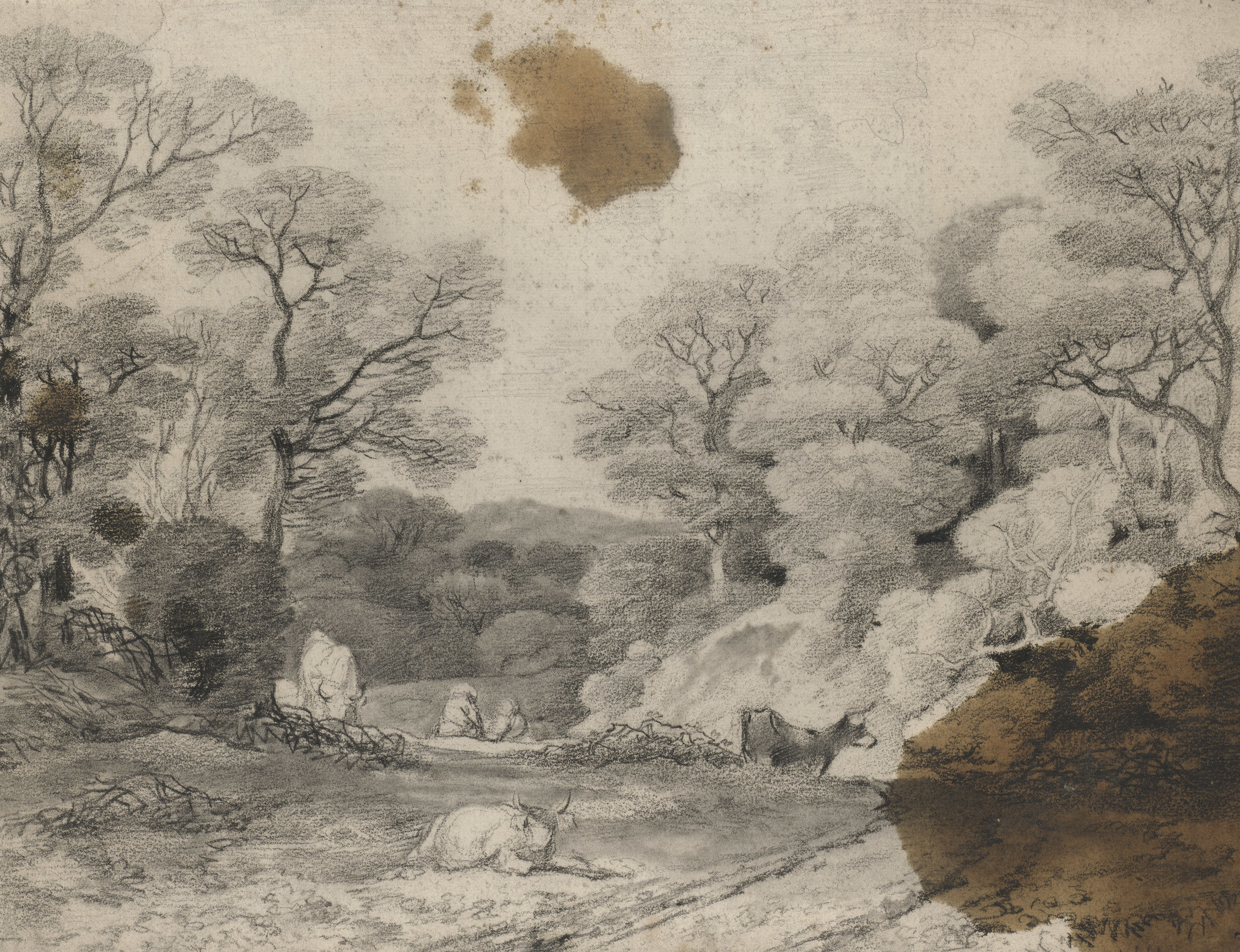
Gainsborough's Drawing Materials
The 25 newly discovered drawings expand the total number of drawings from Gainsborough’s early period by about one fifth. These new drawings are on several distinct types of paper. Although they are all of a similar size and format, their technique varies slightly across the group.
Most of the drawings (17 out of 25) are on a rough grey paper, often creased and with a prominent central fold from where it was hung to dry during the papermaking process. A similar type of paper was previously only known in one other Gainsborough drawing (at Hoveton House, Norfolk). This cheap paper, imported from France, was intended for wrapping and other daily uses. It must also have appealed to Gainsborough as the roughness of the surface provided good friction for drawing in chalks. The mid-grey tone also allowed him to experiment with both black and white chalk on the same sheet.
For these drawings Gainsborough used sticks of black and white chalk, sharpened with a knife and held in a split stick known as a porte-crayon. He blended the chalks into the paper with a wad of tightly rolled leather known as a stump, to create smoother tones and subtle light effects.
Seven drawings are in black chalk on a fine white artists’ paper, made in the Netherlands. Drawing paper of this type has a much smoother surface, allowing Gainsborough to create very delicate effects in the trees and foliage.
The presence of large oil stains on three of the drawings suggests that the sheets suffered an accident in the studio: probably a jar of linseed oil knocked onto the pile. Artists mixed linseed oil with their oil paints to create thinner washes of colour. Over time, the clear shiny oil stains have discoloured to brown. The three drawings can be seen below.










